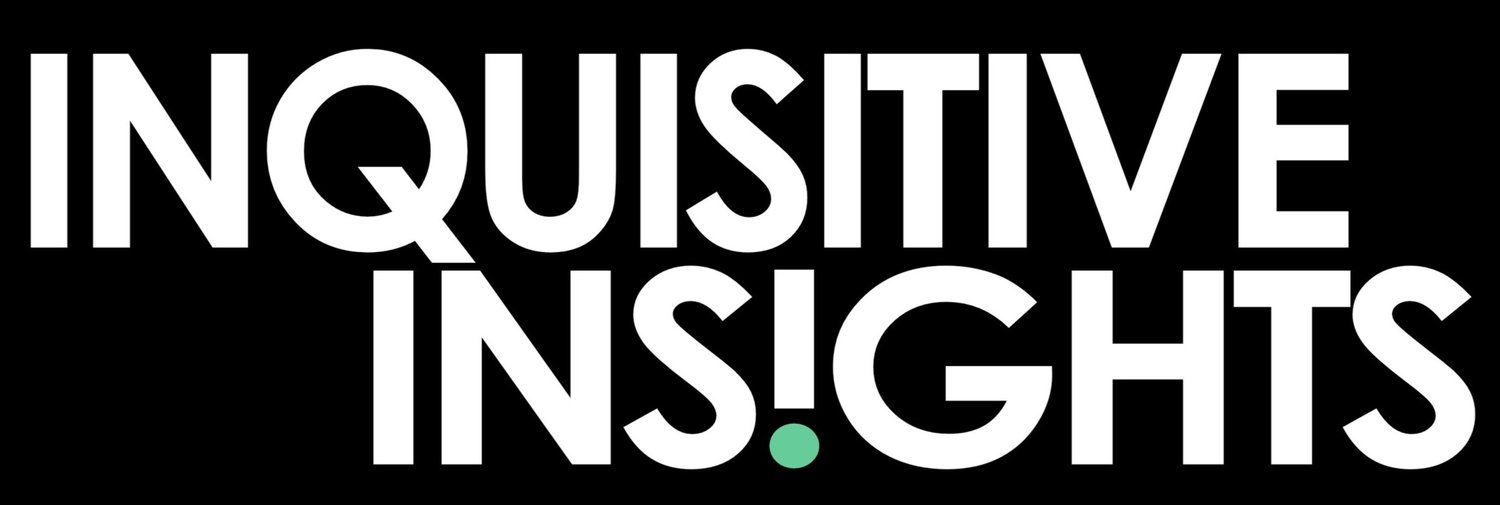Blog

Hiring an Insights Leader Could Make You a Better CMO
Every CMO in a growing B2C company eventually hits the same moment. The team has data, dashboards, and a steady flow of marketing activity, but major decisions still feel harder than they should. Customer behavior is shifting, but the reasons behind those shifts are unclear. Opinions compete for attention because no one has the full picture. You can feel the limits of what your team can see.

Your Gen Z Strategy Might Be Missing the Vibe Shift
Holiday shopping forecasts tell a confusing story: Gen Z plans to spend less overall but still intends to treat themselves. PwC reports a 23 percent cut in planned holiday budgets alongside a rise in micro-luxury purchases — the $7 coffee, the limited-edition drop, the skincare upgrade. Between January and April 2025, Gen Z spending fell 13 percent, yet the same study found spikes in smaller, emotionally charged buys that deliver a sense of care, creativity, or belonging.

If Happiness Drives Spending, What Does That Mean for Us Right Now?
When we saw a recent headline that suggested happy people shop more, we couldn’t help but wonder: What does that mean right now? Because most Americans don’t seem especially happy at the moment.

Future-Proofing Your Research Function
Research teams are being asked to do more with less. Budgets are tightening, junior hires are slowing, and demand for insights hasn’t let up. For research managers, this creates a tough balancing act: what work should stay in-house, and what should be outsourced?

To Win in 2026, CMOs Must Ground Strategy in Insight Now
Customer loyalty has never been more fragile. The Qualtrics 2025 Consumer Trends Report shows that more than half of bad experiences lead customers to cut their spending, while even making slight improvements to customer experience makes people 68% more likely to buy again.

Why Some Insights Work (and Others Don’t)
Consumer researchers do what they do because they love to ask questions, understand people, and surface human truths. But the real value of the work isn’t in the data itself – it’s in the actions the insights provoke.
Studies show that up to a third of research data goes unused, and up to 40% of reports add little or no value because they lack context, clarity, or a clear path to action. When insights aren’t built for impact, momentum is lost and opportunities are missed.

With Confidence Slipping, How is Your Customer Redefining Value?
We know consumers are “trading down” across categories, shifting from premium to private-label goods, swapping fine dining for fast casual, and moving from discretionary splurges to more practical spending. But the latest data reveals something deeper: a redefinition of what “value” really means.

Inclusion is the New Loyalty Metric
Values are now a driving force in consumer behavior. The Harris Poll found that nearly half of Americans who boycott say they’ve done so because companies rolled back diversity, equity, and inclusion (DEI) efforts, and one in five say their consumption habits are changing permanently. That’s not just a flare-up of outrage, that’s a long-term shift in loyalty.

AI‑Built Video Ads Are Everywhere, but Do Viewers Trust Them?
Generative AI is cranking out video ads at a pace that would have stunned creative teams a year ago. According to the IAB’s 2025 Digital Video Ad Spend & Strategy report, nearly nine in ten advertisers already use or plan to use the technology, and “GenAI creative will reach 40% of all ads by 2026.” The numbers are impressive, but they leave one big question unanswered: Do AI‑generated ads actually resonate with consumers?

Consumers Are Trading Down: Qualitative Research Can Help You Step Up
Maybe you saw the recent story in Barron’s, which discusses the trend of more Americans cooking at home, trading down to store brands, and opting for fast-casual instead of fine dining.
This shift is showing up across the consumer landscape — not just in grocery. In beauty, household products, dining, entertainment, and apparel, people are rethinking what’s worth paying for, what feels “good enough,” and where to draw the line between value and experience.

The Era of Certainty Is Over. Empathy Is What’s Next.
Every news cycle brings something new to process. Economic pressure is building. Trust in institutions is slipping. Consumers are stretched thin, emotionally and financially, and many businesses are feeling it too.
In moments like this, it’s easy to pull back. Delay decisions. Play it safe. Wait for things to settle.
But the brands that will survive these strangely precedented-yet-unprecedented times, are the ones that stay close to the people they serve. The ones that choose empathy over assumption.

Rebranding? You Might Be Fixing the Wrong Problem
We often talk to clients who say their brands feel tired or dated. Maybe the look feels off. Maybe the messaging doesn’t reflect how the business has evolved. Whatever the reason, the instinct is often the same: time for a rebrand.
New colors. New font. New vibe.
But here’s the truth: a brand refresh won’t fix what you don’t understand.

3 Research Tactics Every Leader Should Be Using
So you've bought into the idea: consumer research isn’t just for validating campaigns—it’s the foundation of a strong, strategic brand. But what does that look like in practice? (Not sure? Read our previous post)
You don’t need a sprawling insights team or a million-dollar budget to get started. The most effective marketing leaders use focused, thoughtful research…

How Brand Clarity Makes You a Smarter Marketing Leader
In fast-moving markets, brand is often misunderstood—reduced to color palettes, logos, or lofty vision statements. But brand, at its core, is how consumers perceive your business. And if you're not actively shaping that perception with real consumer input, someone else will.


You Can’t Algorithm Your Way to Empathy
Every now and then, a new research tool comes along that promises to change everything. Lately we’re hearing more and more about synthetic data: information that’s created by algorithms to look and behave like real consumer responses, without needing to ask actual people anything at all. It’s not science fiction; it’s already being used to model behaviors, predict trends, and simulate feedback in place of real research.

How Smaller Companies Can Unlock Bigger Customer Insights
Let’s debunk a myth: you do not need a massive insights department to make smarter business decisions. In fact, some of the most nimble, high-impact research comes from small, focused teams—especially when they know how to ask the right questions.

From Interviews to Innovation: 5 Ways to Turn Qualitative Research Into Action
If you work in marketing or innovation, chances are you've seen it happen: your team commissions a research study, receives a thick report full of charts and quotes, and then…nothing really changes. The insights feel interesting, but they don’t seem actionable.
Sound familiar?

So You Want to Go Direct-to-Consumer? Do This Research First
Direct-to-consumer is having a moment. DTC sales accounted for around 1 in 7 e-commerce dollars globally at the start of 2024 (Nielsen).
And sure, the allure of cutting out the middleman is undeniable. Higher margins, total creative control, a direct line to your customers—what’s not to love? But before you pop the champagne and launch your brand’s sleek new e-commerce site, let’s pause for a reality check.
Going direct-to-consumer (DTC) isn’t as simple as flipping a switch. The landscape is littered with brands that assumed customers would flock to their online store, only to be met with…crickets. The brands that succeed start with a deep understanding of their consumers—what they want, how they shop, and whether they actually care about buying directly from you.
So, before you pour millions into a DTC operation, let’s talk about the four critical questions you need to answer first.

How Smart Brands Stay Resilient Through Declining Consumer Confidence
Consumer confidence, often a bellwether for economic health, has taken a notable hit. According to the University of Michigan's Consumer Sentiment Index, February saw a seven-month low in consumer confidence.
Historically, falling consumer confidence signals a shift in purchasing behavior. As economic uncertainty looms, households tend to cut down on discretionary spending, opting instead for essentials. This phenomenon plays out across sectors—luxury goods see declining sales, retailers report increased demand for private-label products, and service industries adjust to changing consumer priorities. The result is a market landscape that is both volatile and difficult to navigate.
